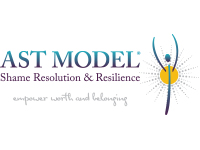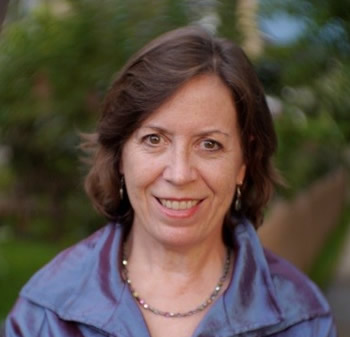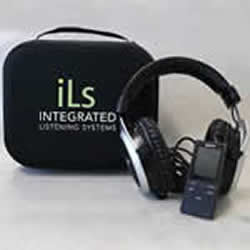I remember, not too long ago, experiencing what I call the blame game and its potential to capsize my therapeutic relationship with a client. This was the sixth session in our 10 session series. Together we traversed tender and traumatic terrain as she worked through early attachment ruptures that shared echoes of shame, abandonment and unmet needs. Each session we reviewed her progress. She explained how pleased she was that these seemingly gentle sessions created empowered actions almost effortlessly in her life when historically she felt stuck.
To give you some background into my process, each Alchemy of Shame Transformation (AST) Model session lasts 75 minutes. Although integration happens throughout the session, the last 10 or 15 minutes are reserved for cognitive integration of the experience; clients are encouraged to devote a special journal or notebook to capture the tools we harnessed from the session.
During the last 10 minutes of this sixth session this particular client launched into a new set of issues. I expressed my desire to listen but stated the fact we were in integration mode with only 10 minutes left, with no way to do justice to what she wanted to bring up. Unlike times past, she was not deterred and continued her attempt to cram in this new material.
It occurred to me that we had switched our regular session time to accommodate my travel needs—we would skip a week for reconnecting. I wondered if this brought up her abandonment wound but didn’t want to explore that in the final two minutes of our time. So I filed it away.
In the beginning of our next weekly session, she said she was hurt. She felt I hadn’t been present for her experience in an attuned way toward the end of her last session in my usual way. When I mentioned that we were in integration mode and there was not enough time to do the new issue justice, she remained dissatisfied and stuck to her sense of how I stopped being present for her. I asked what it was like for her to express that; she said she was still angry and wanted an apology. Of course it is human to want to point out how I wanted to be completely present and not end abruptly and how this might relate to my changing our appointment time, but I didn’t. Part of what I teach in the AST Model is how to stay present and open to shame and blame’s projection so we as facilitators’ of another’s process don’t get caught up in the swirl. I connected to the openness in my breath and my stomach and recognized she was experiencing a strong impulse to project. Seeing her body so tense and the anger in her eyes, I felt as though she was connecting with the thwarted impulse to project early blame outward instead of her habitual collapse at the core. So, I invited her to project.
“Honestly,” I said, “I don’t want to get into a back and forth here. Just feel yourself allowing your anger and blame to go outward from your body, from your eyes and hands and heart toward me and see it and feel it land here with me.”
She did, and I coached her further to feel it in her body. After about 30 seconds she took a big breath and her face and entire body relaxed. She said she felt way better. That’s when I asked if she thought these feelings might possibly have anything to do with my leaving and switching around our appointment. She thought for a moment, nodded, and we were off into our usual collaborative session work.
Sitting on the receiving end of client projected shame, blame or guilt is never easy. It often forces us into a demoralizing double bind—we can either accept or reject the projection. Accepting is disempowering while rejecting requires us to give it back. Either choice brings to question our effectiveness as professionals and role we play in the therapeutic change process we hold out for them. Professional burnout goes hand-in-hand with demoralized feelings about our work. The truth is, when we, as facilitators, no longer embody the hope of shifting shame cycles, we do in fact become less effective at ending them.
Why do projections present in our clinical relationships?
When clients project their shame onto us, they experience a real neurobiological sense of initial relief! When the stakes feel especially high, the projection is a pressure relief valve. Think about it. Can you remember a time when you felt relieved when you discovered “the problem” wasn’t your fault?
Think back to such a time, particularly when the outcome mattered, and see if you can identify the feeling of relief in your body. When we feel cornered by shame or blame or guilt, whether imaginary or not, there’s a natural impulse to throw the feelings off and have them land somewhere else; hence, the term projection. If the shame, blame, or guilt simply spins somewhere in space, its negativity impacts us, leaves us feeling burdened, bad. But when we identify where and with whom we think our blame (or shame or guilt) belongs and send it their way, it feels like an enormous, successful escape from the weight of the feelings attacking us.
So, if a client is shaming, blaming or guilt-tripping you, and you have identified it together in the relationship and earnestly offered a remedy or repair to the situation without any shift, I offer a suggestion that is empowering for both of you! Ask your client if, for five minutes, you can try an experiment; explain that you will accept her shame, blame or guilt or whatever it is she is proposing.
Allow yourself to accept this as you would a heavy burden that is not yours, but one you are willing to hold onto so that person can gather enough momentum to lift herself out of a ditch. Ask your client if she can feel you taking it on and holding it in the moment. Ask what difference it makes for her.
In my experience, nine times out of 10 clients feel enormous relief, which shows up in the form of tears of joy, sighs of relief, easier breathing patterns and increased muscular relaxation (especially visible in facial expressions indicating their social engagement system is back online and ready to connect). After five minutes ask your client how she feels about you and the situation. Again, the majority of people feel gratitude for the experience and often view the situation differently than they did before.
Caryn Scotto d’ Luzia is an innovative somatic facilitator, educator and trainer. She is  developer of AST Model of Holistic Shame Resolution®, a neurobiologically–principled, attachment based approach that specializes in chronic shame relief, building shame and inner critic resilience, healing shame-based early trauma, facilitating shame-based attachment re-patterning, and supporting life-affirming authentic self-expression and empowerment.
developer of AST Model of Holistic Shame Resolution®, a neurobiologically–principled, attachment based approach that specializes in chronic shame relief, building shame and inner critic resilience, healing shame-based early trauma, facilitating shame-based attachment re-patterning, and supporting life-affirming authentic self-expression and empowerment.
She is the author of the following ebooks and articles, Alchemy of Shame Transformation for Therapists and Healing Professionals (AST), The 5 Step Journey to Healing Social Phobia, The Yin/Yang of Abandonment Recovery, and Wound & Essence: A Call and Response Approach to Transformation. She is leading a shame-free living movement and training therapists, healers, and community leaders how to facilitate shame resolution and cultivate acceptance, connection, belonging, worth and well-being.
Caryn works face-to-face with people around the world on Skype, and in-person in the California’s Bay Area and New York City where she sees adult clients. She offers phone case consults to therapists, healers, and coaches as well as teaches neurobiological principles through webinars online. On a wider scale, she collaborates with UN affiliated NGOs and Governments to heal collective trauma and post conflict PTSD. She is a Somatic Experiencing Practitioner and SETI adjunct faculty member, a member of the UN NGO Committee on Mental Health, USABP presenter, and speaker at the United Nations on the issue of resolving shame in women and girls around the world.
She is offering a three-day training for Somatic Experiencing practitioners, April 15-17, 2016 in San Diego, CA entitled: AST Model of Holistic Shame Resolution: Level 1. This training program offers CEs and 24 units toward the NEW SETI Advanced SEP Credentialing Program. For information see www.re-embodylife.com or contact Joan Lulu at 858-273-2240 or joanlulu@icloud.com



